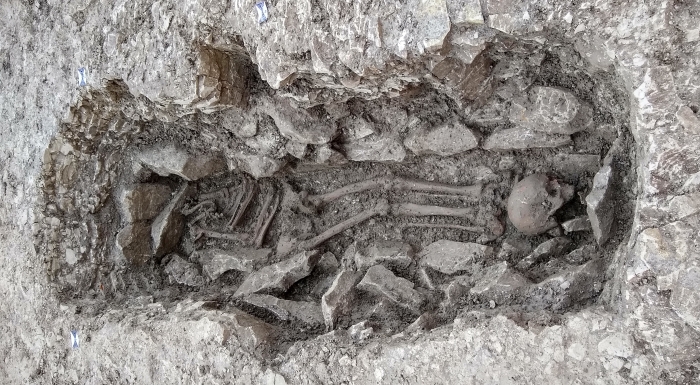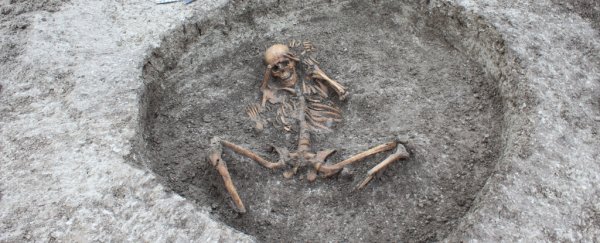An archaeological survey in Oxfordshire, England has produced another macabre mystery: 26 ancient skeletons in burial pits, suspected to be around 3,000 years old, dating back to the Iron Age before the Roman occupation of Britain.
What makes the find even more intriguing is evidence suggesting the pits were used for ritual burials.
The chthonic spaces of the British Isles are riddled with so much human history that there is legislation requiring archaeological assessment prior to major spatial works.
These remains were discovered prior to a project by Thames Water, which is laying a pipeline to protect Letcombe Brook, a rare and valuable chalk stream.
"The new Thames Water pipeline provided us with an opportunity to examine a number of previously unknown archaeological sites," said Neil Holbrook of Cotswold Archaeology.
"The Iron Age site at Childrey Warren was particularly fascinating as it provided a glimpse into the beliefs and superstitions of people living in Oxfordshire before the Roman conquest. Evidence elsewhere suggests that burials in pits might have involved human sacrifice."
That evidence is yet to be revealed, but some of the remains are definitely peculiar.
One of the skeletons had been buried with feet that had been amputated and placed on either side of the torso, their arms up near the head. Another's skull had been removed, and buried next to their feet.
 (Thames Water)
(Thames Water)
Such burials that differ significantly from normal burial practices are referred to as "deviant" burials, and it's thought that they are usually performed for ritual purposes.
A cemetery in England dating back to the 4th century CE contained a large number of decapitated skeletons whose skulls had been placed at their sides or near their feet, although the significance of this practice remains unknown.
But evidence suggests Iron Age Britons had quite an interactive relationship with their dead, often exhuming corpses. Disarticulated skeletons are not the exception, but the norm.
The excavations also yielded evidence of dwellings, animal remains, and household objects such as pottery, cutting tools and a decorative comb.
"These findings open a unique window into the lives and deaths of communities we often know only for their monumental buildings, such as hillforts or the Uffington White Horse," said Paolo Guarino of Cotswold Archaeology.
"The results from the analysis of the artefacts, animal bones, the human skeletons and the soil samples will help us add some important information to the history of the communities that occupied these lands so many years ago."
The remains have been removed from the site for further forensic examination, which will hopefully yield more insight into who they were, and the way they lived their lives. And, if we're really lucky, more clues into why the bodies were buried in such a peculiar way.
"The discovery challenges our perceptions about the past, and invites us to try to understand the beliefs of people who lived and died more than 2,000 years ago," Holbrook said.
